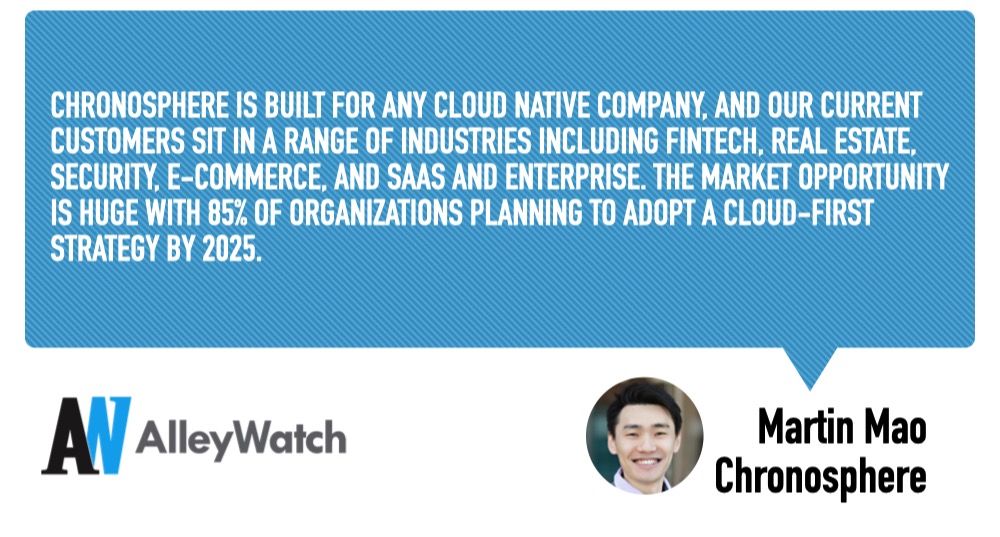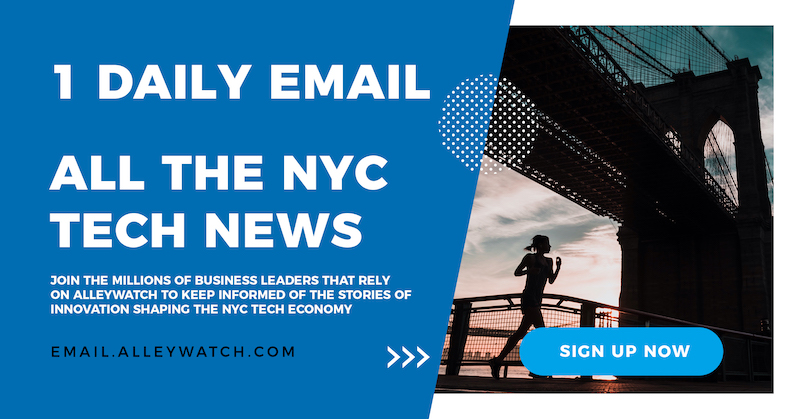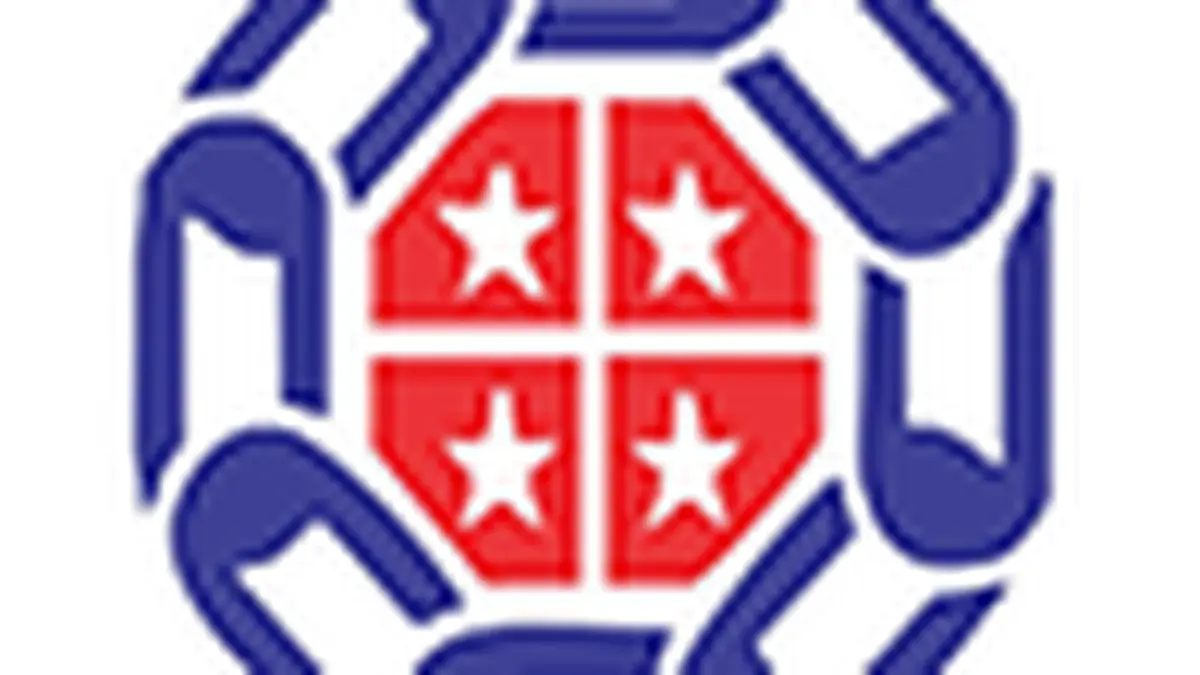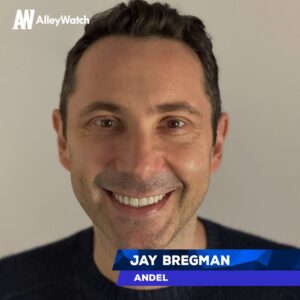As the cloud grows in popularity and cloud infrastructure becomes more complex, handling data across multiple containers and virtual servers, observability becomes critical. Traditional logging, monitoring, and tracing found in a pre-cloud world just aren’t robust enough to handle applications or processes that may be around for only a few milliseconds before disappearing. Chronosphere is a cloud-native observability platform built for engineering teams to allow them to remediate rapidly. By increasing scalability and decreasing downtime, customers on the platform are able to save on average $4.9M over three years according to the company’s data. Chronosphere counts companies like Robinhood, Snap, DoorDash, Zillow, StubHub, and Visa as customers.
AlleyWatch caught up with Chronosphere CEO and Cofounder Martin Mao to learn more about the business, the company’s strategic plans, recent round of funding, and much, much more…
Who were your investors and how much did you raise?
Chronosphere has raised an additional $115M in Series C funding, bringing our total funding to $343M–increasing our valuation to $1.6B. We’re very excited to bring on new investors including GV (formerly Google Ventures) and Geodesic Capital in this round, Addition, Founders Fund, General Atlantic, Greylock, Glynn Capital, and Lux Capital also participated.
Tell us about the product or service that Chronosphere offers.
As companies grow and move to cloud-native, engineering teams are dealing with an explosion of observability data. You might think that more data is better for quickly solving issues, but it’s actually the opposite: it usually slows down the time it takes to fix customer-facing incidents. In a recent survey that we ran, we found that only 1% of companies are meeting their mean time-to-repair goals.
Chronosphere is the only observability platform that is focused on putting cloud-native engineering teams in control of these challenges by taming explosive data growth and helping them solve customer-facing issues faster. Without a strong observability platform and process, companies can face significant consequences, such as customer churn or lost revenue. Chronosphere’s observability platform provides immediate actionable detection of customer-facing issues — speeding up time to remediation, streamlining engineering workload, and improving the end-user experience.
What inspired the start of Chronosphere?
My cofounder, Rob Skillington and I came up with the idea for Chronosphere while working as engineers at Uber. At the time, Uber couldn’t find any products to meet its growing data demands, so Rob and I led the development of the M3 open-source metrics engine. We scaled this to be the second largest real time metrics system in the world.
A few years later, we realized that the entire world was starting to adopt cloud native technologies and that other companies were going through similar growth pains, so we started Chronosphere to help companies that had similar observability needs.
How is Chronosphere different?
Legacy infrastructure monitoring and Application Performance Monitoring (APM) tools are simply not built to handle the scale, speed, and complexity of cloud-native environments and over-index on capturing the data (i.e., metrics, logs, and traces). Organizations are left with slow, unreliable, and expensive solutions that don’t help them remediate critical customer issues faster.
Chronosphere is different in significant ways. We optimize the data so that teams can quickly focus on the problem at hand. Our control plane lets customers transform their observability data based on the need, context, and utility. Unlike other observability solutions that require you to collect, store, and pay for all your data regardless of the value you get from it, Chronosphere gives customers the tools to reduce noise so teams can access the right information and solve problems faster while reducing stored data by 48% on average. We are also simply more reliable. While our promised SLA is three 9s, our actual delivered SLA is better than four 9s. And this is all done with no vendor lock-in so that businesses have the flexibility to change and update if their future observability needs should change. In the end, our customers can fix problems more quickly and gain greater flexibility and control over their observability costs–versus competitive offerings.
What market does Chronosphere target and how big is it?
Chronosphere is built for any cloud-native company, and our current customers sit in a range of industries including fintech, real estate, security, e-commerce, and Saas and Enterprise. The market opportunity is huge with 85% of organizations planning to adopt a cloud-first strategy by 2025.

What’s your business model?
Chronosphere is a cloud native SaaS solution. The subscription service is sold via annual contracts with a minimum of one year.
How are you preparing for a potential economic slowdown?
We are planning for efficient growth with an eye to both the top and bottom lines. As it happens, in this economically uncertain time our customers are seeing a huge value in our solution– as they, too, are looking to be more cost efficient. Our recent research showed a huge opportunity in this area as it pertains to observability. The research showed that engineers now spend 25% of their work weeks on low-level troubleshooting tasks, costing US businesses over $44B each year. Observability solutions like ours help teams spend 65% less time spent on observability administration–time that could better be spent innovating. Other recent research showed that businesses that use our platform gain $7.9M in business value and $4.9M in savings in three years. And who doesn’t want that nowadays?
What was the funding process like?
We’re lucky, the round was mostly insider initiated; but, given the business traction, we attracted lots of external interest. We decided to partner with new investors who were going to bring more than just capital to the table.
What are the biggest challenges that you faced while raising capital?
The biggest challenge was trying to figure out what valuation would be fair given the current macroeconomic climate and what was happening in the public markets. I’m glad we settled on an increased valuation, but had we raised earlier in the year with better conditions, the valuation would’ve been higher.
What factors about your business led your investors to write the check?
Of course, there are lots of factors. First, there’s a significant market opportunity. Gartner projects the IT Operations market to grow to $62B by 2026. We are also fortunate to have enviable metrics. As of the last full quarter, we had tripled our Annual Recurring Revenue (ARR), attained greater than 145% net revenue retention, and retained 100% of our customers. We also have added some of the largest cloud-native infrastructures to our roster including Snap, Robinhood, along with one of the largest real estate platforms in the world. So far, the signs all point to further success in these important areas.
Of course, there are lots of factors. First, there’s a significant market opportunity. Gartner projects the IT Operations market to grow to $62B by 2026. We are also fortunate to have enviable metrics. As of the last full quarter, we had tripled our Annual Recurring Revenue (ARR), attained greater than 145% net revenue retention, and retained 100% of our customers. We also have added some of the largest cloud-native infrastructures to our roster including Snap, Robinhood, along with one of the largest real estate platforms in the world. So far, the signs all point to further success in these important areas.
What are the milestones you plan to achieve in the next six months?
While we can’t give out specific details, we will continue to innovate on our product and expand our go-to-market efforts.
What advice can you offer companies in New York that do not have a fresh injection of capital in the bank?
In uncertain times, executives need to consider how they can preserve cash– even if that means reducing headcount. You have to assume that things might get worse before they get better. Your survival may very well depend upon it.
Where do you see the company going now over the near term?
At Chronosphere we serve two audiences: 1. We support microservices developers to understand the changes they are making and better solve problems when they are on call. 2. We support administrators and microservices owners so they can connect the utility of their telemetry to the cost of that telemetry.
In 2023 we are delivering new functionality to both. We’ll provide developers with more and more signals and data sources, help them understand what changed, and give them tools to navigate and focus inside the bewildering scale of production microservices environments. We’ll give system administrators even better tools to understand exactly how their data gets used, and the ability to delegate telemetry budget management and policy control down to teams and microservice owners.
We’re also looking to continue our growth trajectory by expanding our customer base and reach. We currently have customers across a range of industries including fintech, real estate, security and Saas and Enterprise market and are excited to expand our footprint in these markets and beyond.
What’s your favorite coffee shop or location in the city to hold a meeting?
I’m not much of a coffee drinker anymore but if I had to pick a spot it would be Merriweather Coffee, which has a nice Aussie vibe.









































